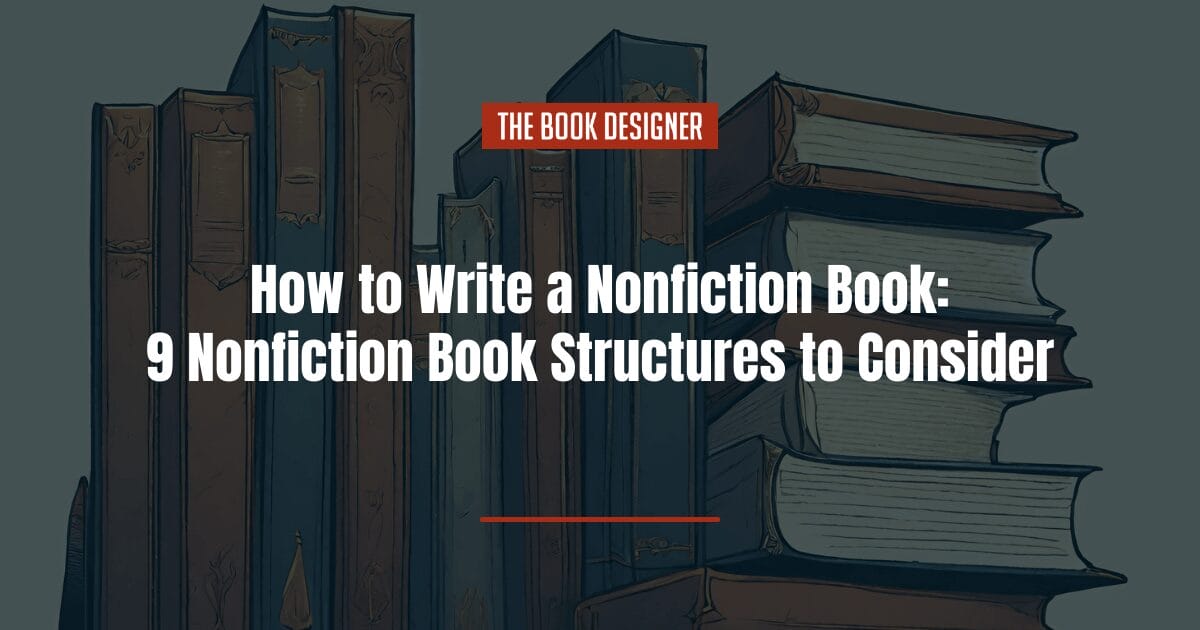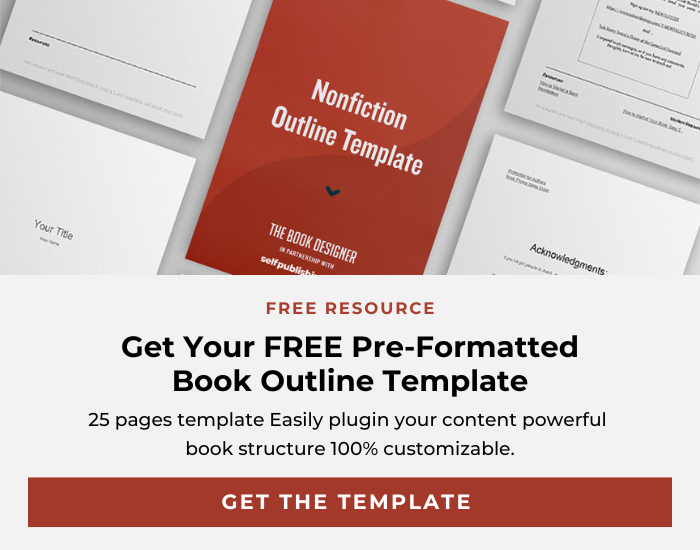If you’re wondering how to write a nonfiction book that’s actually useful for readers, you may find yourself wondering how to structure your book for the most impact. With fiction, the structure is usually pretty straightforward. You either pick a three-act or five-act structure and go from there. Or you ignore structure altogether and start writing.
Nonfiction requires a bit more focus, though. And depending on what kind of nonfiction book you’re writing, some structures will work better than others.
Below, we’ll break down nine nonfiction book structures you should consider when determining how to write a nonfiction book that works for your subject matter and target readers.
When figuring out how to write a nonfiction book, consider the following structures:
How to Write a Nonfiction Book: Narrative Structure
Narrative structure is often considered only appropriate for fiction. However, many types of nonfiction books can also benefit from this type of structure. For example, many memoirs follow a narrative structure. The same can be said for true crime books, historical accounts, or biographies.
One of the most widely-used structures in fiction is the three-act hero’s journey. This breaks your narrative up into three distinct phases: Departure from the ordinary world, Initiation into the new world, and then Return to the ordinary world (with new lessons learned). The five-act structure is also sometimes used for narrative works. The five acts are Exposition, Rising Action, Climax, Falling Action, and Resolution.
If your nonfiction book has a clear narrative arc (or could be given one), then the narrative structure is for you!
How to Write a Nonfiction Book: Problem-Solution Structure
If your nonfiction book aims to address a common (or not-so-common) problem, then the problem-solution structure is probably a perfect fit. This structure begins by identifying and thoroughly exploring a problem, setting the stage for the book’s primary focus. In this phase, you’ll delve into the nuances of the issue, often incorporating statistics, anecdotes, and historical context to give the reader a comprehensive understanding of the problem’s significance and impact.
The goal here is to create a connection with the reader, often by highlighting the relevance of the problem in their personal or professional lives. This approach not only establishes the stakes but also piques the reader’s interest in finding a solution, making them more invested in the content that follows.
Following a detailed explanation of the problem, the book transitions into presenting solutions. This section is dedicated to offering strategies, methods, or ideas to effectively tackle the identified issue. The solutions provided are usually well-researched and supported by evidence, including expert opinions, case studies, or successful examples.
You might present a single, comprehensive solution or multiple approaches, depending on the complexity of the problem and the scope of the book. This section is crucial as it not only educates but also empowers the reader, providing practical advice, tools, or insights that they can apply. The effectiveness of a problem-solution book largely hinges on this part, as it transforms the reader’s understanding of the issue from a state of awareness to one of actionable knowledge.
By the end of the book, readers should feel equipped with the knowledge and tools necessary to address the problem in their context, making this structure particularly powerful for self-help, educational, and business-related nonfiction.
How to Write a Nonfiction Book: Thematic Structure
The thematic structure in nonfiction writing involves organizing content around central themes or ideas, rather than following a chronological sequence or a specific storyline. This approach allows for a deep and multifaceted exploration of a subject from various angles, making it particularly suitable for complex or broad topics.
Each chapter or section delves into a different aspect of the overarching theme, enabling you to dissect and examine the subject in detail, often bringing in diverse perspectives, theories, or subtopics. This method of structuring ensures a comprehensive understanding of the subject matter, as it allows the reader to grasp its various dimensions and interconnections.
Thematic structure is ideal for academic texts, philosophical works, and any nonfiction books where the goal is to provide an in-depth analysis of a topic rather than narrate a linear story or solve a specific problem. It encourages readers to think critically about the subject, as they are not just presented with information, but are also guided through interconnected ideas and insights.
How to Write a Nonfiction Book: Comparative Structure
The comparative structure in nonfiction writing is an analytical approach that juxtaposes different ideas, cases, or phenomena to highlight their similarities and differences. This method is especially effective in fields like history, sociology, political science, or business, where understanding the nuances between different concepts, time periods, or models can provide deeper insights.
Each section or chapter typically focuses on comparing two or more elements, examining their characteristics, impacts, and implications in relation to each other. This structure enables you to present a balanced view, drawing attention to the strengths and weaknesses of each element under consideration. By placing these elements side by side, the comparative structure not only enriches the reader’s understanding but also encourages critical thinking and a more nuanced perspective of the subject matter.
It’s particularly useful for readers who seek a comprehensive understanding of complex topics, as it provides a framework for evaluating and contrasting key ideas and themes in a structured and coherent manner.
How to Write a Nonfiction Book: How-to Structure
The how-to structure in nonfiction books is a pragmatic and straightforward approach designed to guide the reader through a series of steps or instructions to achieve a specific goal or complete a task. This structure is highly popular in genres like self-help, cooking, crafts, business, and fitness, where practical, actionable guidance is key.
Each chapter or section typically focuses on a distinct stage of the process, breaking down complex tasks into manageable parts, often accompanied by detailed explanations, tips, and visual aids like diagrams or photographs. This step-by-step format not only makes the content accessible but also ensures that readers can follow along and apply what they’re learning in a real-world context.
The effectiveness of a how-to book lies in its clarity, conciseness, and ability to translate theoretical concepts or skills into concrete, achievable actions. By providing a clear roadmap, these books empower readers, giving them the confidence and tools needed to master new skills, solve problems, or improve their lives in tangible ways.
How to Write a Nonfiction Book: Modular Structure
The modular structure in nonfiction is characterized by its segmented yet cohesive approach, dividing the content into self-contained modules or sections that can be read independently or as part of the whole. This format is particularly advantageous for reference books, educational materials, or any subject matter where readers might seek specific information without needing to read the book sequentially to understand the content.
Each module typically focuses on a specific topic, concept, or aspect of the broader subject, allowing for in-depth exploration and clarity. Think of them like lessons in a course—they may build upon each other but you can also read them in any order.
This structure offers flexibility to the reader, enabling them to target their reading to areas of interest or need, while also maintaining a comprehensive grasp of the subject if read in its entirety. It’s a user-friendly approach that caters to diverse reading preferences and is especially beneficial in an educational or professional context where targeted information is often required.
How to Write a Nonfiction Book: Question and Answer Structure
In the question-and-answer structure, the content of a nonfiction book is organized as a series of questions followed by detailed answers. This format is highly engaging and reader-friendly, particularly suitable for topics that are complex or unfamiliar to the audience.
Each chapter or section typically starts with a commonly asked question or a series of questions that the reader might have about the topic, followed by thorough explanations or discussions.
This approach mimics the natural curiosity and inquiry process of learning, making it an effective method for educational books, FAQ-style guides, or any subject where addressing specific queries is essential. It helps in breaking down complicated subjects into digestible segments and ensures that the content directly addresses the reader’s concerns or interests, making the book highly relevant and accessible.
How to Write a Nonfiction Book: Case Study Structure
The case study structure in nonfiction involves the use of real-world examples or scenarios to illustrate and explore various concepts or theories. This approach is commonly employed in business books, academic texts, and works focusing on social sciences, where practical application of theories is as important as the theories themselves.
Each chapter or section usually revolves around one or more case studies, providing a detailed analysis that includes background information, the challenges faced, the solutions implemented, and the outcomes achieved.
This method not only enhances the reader’s understanding of the theoretical aspects but also offers insights into their practical application. It makes abstract concepts tangible and relatable, allowing readers to learn from real-life successes and failures, thereby adding depth and credibility to the subject matter.
How to Write a Nonfiction Book: Listicle Structure
The listicle structure in non-fiction employs a format that is both reader-friendly and engaging, organizing content into lists. Each chapter or section presents a new list, focusing on a specific aspect of the topic. This could range from “Top 10 Tips” to “5 Key Strategies,” providing a structured and easy-to-follow format.
Ideal for lighter non-fiction or topics aimed at a general audience, the listicle format breaks down information into bite-sized, easily digestible pieces. It’s particularly effective for readers who prefer a straightforward, no-nonsense approach to learning or for subjects that lend themselves well to itemized advice or suggestions.
The appeal of this structure lies in its simplicity and clarity, offering quick, accessible insights that are easy for readers to remember and apply.
Final Thoughts
When figuring out how to write a nonfiction book, deciding on your structure can be an excellent first step. The structure will provide you with a guide for creating your outline and writing your actual book.
Remember that you can also create a hybrid structure by combining more than one structure from the list above. For example, you might use a listicle structure for the overall book, but within each list item you might use a narrative structure or a question-and-answer structure. Consider which nonfiction book structure will best serve your readers and convey the information effectively.




